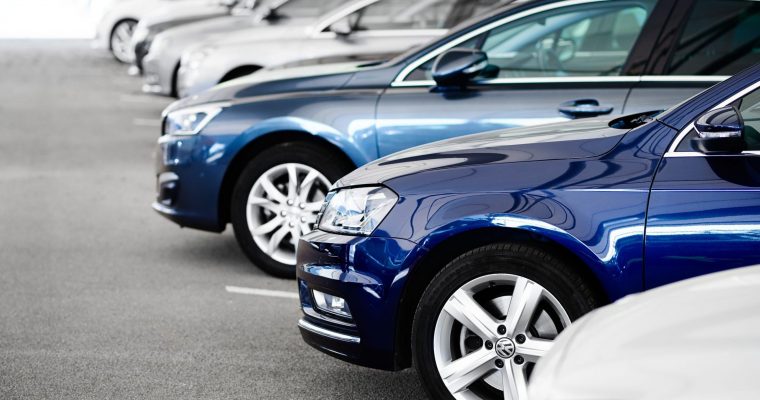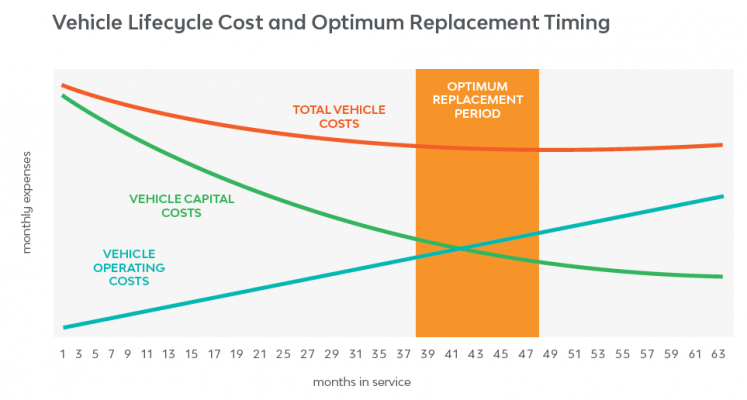
Tips for optimal vehicle replacement timing
FinanceWhen is the right time to buy a new vehicle for your company?
As vehicles age, their running costs increase while their capital value decreases. Old vehicles may become unreliable.
An unreliable vehicle might cause delays and breakdowns that damage your reputation with clients, or present safety issues that endanger your staff. At a certain point, you need to replace old vehicles with new ones.
But how do you figure out when the time is right?
Calculating optimal vehicle replacement
The combination of monthly capital costs (monthly market depreciation on your vehicle) and operating costs (expenses incurred to keep the car on the road) create a total vehicle cost. This is usually demonstrated as a curve. These two types of costs create a concave total cost curve.

You should replace vehicles when the monthly operating costs increase at a faster rate than the monthly capital decreases.
There are also fleet-specific variables that impact your vehicle replacement times. These include your available funds for fleet replacement, lost driver productivity, lower driver morale, corporate image, your company policies, and the frequency of accidents. We often call these “soft factors”.
Creating a replacement schedule
To create your own vehicle replacement schedule, you’ll need to look at the type of vehicle and its use. For example, running an analysis on a small passenger car would bring back a replacement schedule of 34-50 months or 55-75,000kms. Whereas a full-size SUV comes out between 54-62 months or 130-150,000kms.
If you’re leasing your vehicles, the vehicle replacement cycle has often been researched and built into the lease plan as the terms of the lease. You may like to do your own calculations based on your budget to make sure you’re getting the best deal.
Before replacing a vehicle, ask yourself if the vehicle is being fully utilised in its current role? If it’s not, you might be able to reassign it to a more intensive role in order to get the most value for money. By calculating your vehicle replacement cycles, you’ll be able to maximise value-for-money for your fleet and ensure your drivers remain comfortable and safe.
For more information about optimal replacement times for fleet vehicles based on our years of experience in fleet management please read our guide to vehicle replacement.
 Driving Insights
Driving Insights




